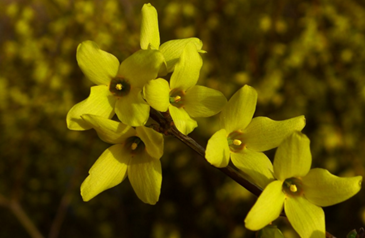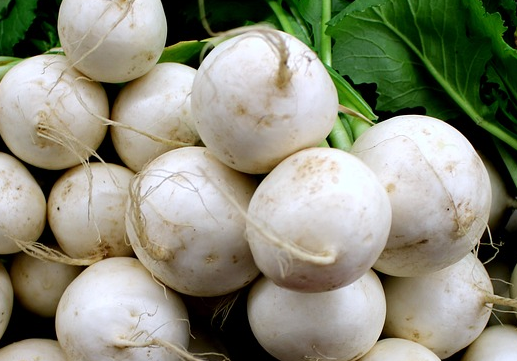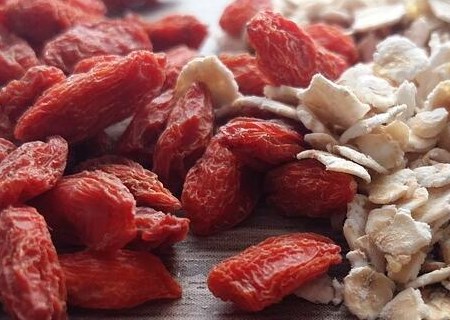How much is the price of Oleaceae forsythia (yellow flower pole) per jin? How to grow forsythia flower?
Forsythia, also known as Huanghuagan, Huang Shoudan, can be planted as a flower Gracilaria or embankment tree. Forsythia forsythia leaves bloom in early spring, full of golden, gorgeous and lovely, is an excellent flowering shrub in early spring. Stems, leaves, fruits and roots can be used as medicine. Do you know how much forsythia costs per jin? How do you plant it? According to market understanding, the price of Forsythia suspensa is about 20-25 yuan per jin, but it varies greatly due to quality, variety, origin and market. Forsythia can be divided into two kinds: forsythia and forsythia. Forsythia is harvested when the pericarp is green and not yet ripe in early September, boil for a while in boiling water or steam in a steamer for about 0.5 hours, remove and dry. Lao Qiao harvested, dried and sifted seeds and impurities when the fruit was ripe and yellowed and the fruit shell cracked in the early ten days of October.

1. Morphological characteristics of forsythia flower
Deciduous shrubs, up to 3 meters high. Stems tufted, erect; branches spreading, arched pendulous; branchlets yellowish brown, slightly quadrangular, lenticels numerous and conspicuous, pulp hollow. A few leaves in a single leaf are 3-lobed or divided into 3 leaflets, opposite, ovate, broadly ovate or elliptic-ovate, long 3~10cm, glabrous, apex acute, base rounded to broadly cuneate, margin coarsely serrate. Flowers first leaves open, usually solitary, sparsely 3 axillary; calyx lobes 4, rectangular orbicular; Corolla yellow, lobes 4, Obovate-elliptic; stamens 2; pistil longer or shorter than stamens. Capsule ovoid, with verrucous spots scattered on the surface. Blossom before leaves from March to April.
Second, the characters of forsythia flower
This product is long ovate to ovate, slightly flat, long 1.6~2.5cm, diameter 0.5~1.3cm. There are irregular longitudinal wrinkles and most protruding spots on the surface, and there is an obvious longitudinal groove on each side.
Top tax tip, base with small fruiting pedicels or deciduous. "Qingqiao" mostly does not crack, the surface is green-brown, the raised gray-white spots are less; the quality is hard; the seeds are mostly yellowish green, slender and winged on one side. "Lao Qiao" split or split into two petals from the top, the surface is yellowish brown or reddish brown, the inner surface is mostly light yellowish brown, smooth, with a mediastinum; brittle; seeds brown, most have fallen off. The breath is slightly fragrant, but the taste is bitter.
3. Suitable eco-climatic conditions for the cultivation of Forsythia suspensa.
1. Under the condition of temperature, Forsythia suspensa often grows in the sparse shrubs on the semi-shady slope or sunny slope at an altitude of 2000m and 2000m. Like the warm, humid, sunny ecological climate environment, with cold tolerance, drought tolerance, waterlogging tolerance, barren tolerance, strong germination ability of branches and so on. The annual average temperature was 8: 12 ℃, and the optimum growth temperature was 18-20 ℃. The growth was inhibited when the maximum temperature was higher than 35 ℃ or the minimum temperature was lower than-15 ℃. The suitable temperature of sowing time is 10: 15 ℃, the optimum temperature of flowering stage is 18: 20 ℃, and the annual frost-free period is more than 170 days during the growing period.
2. under the condition of precipitation, Forsythia suspensa can grow on fertile and barren land, cliffs and stone crevices, which is suitable for subtropical and warm temperate climate. In the natural distribution area, it is appropriate to require annual precipitation 800~1000mm and relative humidity of 60% to 75%. Excessive precipitation and excessive humidity are prone to lodging and pod mildew.
3. Forsythia suspensa requires an ecological environment with sufficient sunshine, annual sunshine hours are more than 1500 hours, annual accumulated temperature of ≥ 0 ℃ is 4000 ~ 6000 ℃, the hottest monthly average temperature is more than 25 ℃, and the coldest monthly average temperature is-5: 5 ℃. It is not very strict to the soil. Neutral, slightly acidic or slightly alkaline soil can grow normally, but it grows better in sandy loam with good drainage and rich in humus, which is beneficial to the formation of quality and yield.
4. Planting methods of Forsythia suspensa
1. The sandy loam with sunny, fertile, loose texture and good drainage is selected for land selection and preparation, and ploughed in autumn, with a depth of 20-25 cm, combined with soil preparation, applying 2000-2500 kg of ring fertilizer per mu, and then raking fine and leveling. The direct seeding ground is made into a flat bed 1 meter wide according to the row spacing of 150 cm × 200 cm, hole depth and hole diameter of 30-40 cm, and the length depends on the topography.
two。 The growing environment likes a warm and humid environment. It is light-loving and hardy, and the open land south of the Yangtze River can survive the winter. Born in sunny slopes, lax soil requirements, drought and barren tolerance, fear of waterlogging, the most suitable for deep and fertile calcareous soil.
3. The mode of propagation is mainly seed propagation and cuttage, and it can also be propagated by striping and separate plants.
(1) seed reproduction and direct seeding in early and middle March in the south and early April in the north, dig a small hole in the prepared hole with a depth of about 3 cm, select mature, full and disease-free seeds, sow 5-10 seeds in each pit, and press slightly after covering the soil, so that the seeds are closely integrated with the soil. It usually blossoms and bears fruit after 3-4 years.
Seedling transplanting: on the flat and raked seedbed, open a ditch with a depth of 1 cm according to the row spacing of 20 cm, spread the seeds evenly into the ditch with fine sand, and press them slightly after covering the soil, using 2 kg of seeds per mu. Spring sowing half a month or so seedlings, seedling height of 5 cm to fix seedlings, 10 cm high loosening soil and weeding, topdressing urea 10 kg per mu, watering with water to promote seedling growth. Transplant before sprouting in the autumn of that year or the next spring. According to the plant row spacing 200 cm × 150 cm, hole diameter 30 cm, apply miscellaneous fertilizer 5 kg, mix with the soil, plant 2-3 seedlings, fill the soil to half the hole, lift the seedling slightly to stretch the root, and then cover the soil to fill, steadfast. If the soil is dry, water should be watered after transplanting, and the soil should be cultivated to preserve soil moisture after water infiltration.
(2) cutting seedlings in overcast and rainy days in summer, cutting the middle and upper part of 1-2-year-old twigs into cuttings 30 cm long, opening ditches 20 cm deep on the seedling bed, then pressing the soil to keep the border bed moist, rooting and surviving in the same year, transplanting before sprouting in the second spring, and generally flowering and fruiting in the same year or the second year.
4. Field management: in the seedling stage of seed propagation, weeding, loosening the soil and seedlings are removed when the seedlings are 20 cm high. Leave 2 seedlings in each hole and water them at the right time. When the seedling is 30-40 cm high, dilute feces and urine can be applied once to promote its growth. When the trunk is 70-80 cm high, the top tip is cut off and multiple lateral branches are cultivated into main branches. After that, 3-4 strong branches were selected on the main branch to cultivate the auxiliary main branch, and the side branches were released, and through shaping and pruning, they formed a natural happy branch type, which was lower than that of short crown, inner hollow and outer circle, ventilation and light, sparse branchlets and early fruiting. Cut off thin and weak branches, overgrown branches and disease and insect branches at any time. In the fruiting period, farm manure, phosphorus and potassium fertilizer can be applied to promote fruit setting and early ripening.
5. Shaping and pruning. The height of the main stem is 80-100 cm, cut off the top tip and promote the lateral branches. after that, 3-4 lateral branches are selected on the main branch to cultivate the secondary main branch, and the secondary main branch develops into a side branch, which is shaped and pruned to form a natural happy branch with low trunk and low crown, inner hollow and outer circle, ventilation and transparent light, sparse branchlets and early fruit. After falling leaves every winter, cut off withered branches, old branches, weak branches, disease and insect branches and overgrown branches to promote the growth of new fruit-bearing branches.
Value and use of Forsythia suspensa
1. Gardens:
Forsythia suspensa blossoms in early spring with light fragrance, golden and lovely branches. It is an excellent flowering shrub in early spring. It is suitable for planting beside houses, pavilions, walls, hedges and roadsides, as well as by streams, ponds, rocks and rockery. Because of the developed root system, it can be planted as a flower Gracilaria or embankment tree.
2. Medicinal use:
Stems, leaves, fruits and roots can be used as medicine. You can also make tea.
3. Comprehensive utilization:
Used in food natural preservatives or cosmetics, seeds can extract oil, is an important oil crop.
VI. Forsythia culture
1. According to the records of Shennong Materia Medica, Forsythia suspensa dominates cold and heat, rat impotence, abscess, abscess, gall tumor, and heat.
2. According to the Records of famous doctors, Forsythia suspensa removes white worms.
3. According to the Theory of Medicinal Nature, Forsythia suspensa has the ability to pass urine and get rid of Hakka fever.
Time: 2019-03-18 Click:
- Prev

What is the planting time and method of blue flower seed and radish? What should I pay attention to?
Radish root for vegetable consumption; seeds, fresh roots, withered roots, leaves are all used as medicine, seeds eliminate food and expectoration, fresh roots quench thirst, aid digestion, withered roots benefit two defecation, leaves treat primary dysentery, and prevent dysentery, so what is the planting time and method of blue flower radish? What should we pay attention to?
- Next

Solanaceae plant Chinese wolfberry is not suitable for who to eat? How should I eat it? How do you plant it?
Lycium barbarum is the mature fruit of Lycium barbarum which belongs to Solanaceae. When the fruit is ripe in summer and autumn, remove the stalk, dry it in a cool place until the skin is wrinkled, and then expose to the hard outer skin and soft pulp. Here to tell you who is not suitable for Chinese wolfberry to eat? How should I eat it? How do you plant it? Chinese wolfberry is not suitable for some people.
Related
- Fuxing push coffee new agricultural production and marketing class: lack of small-scale processing plants
- Jujube rice field leisure farm deep ploughing Yilan for five years to create a space for organic food and play
- Nongyu Farm-A trial of organic papaya for brave women with advanced technology
- Four points for attention in the prevention and control of diseases and insect pests of edible fungi
- How to add nutrient solution to Edible Fungi
- Is there any good way to control edible fungus mites?
- Open Inoculation Technology of Edible Fungi
- Is there any clever way to use fertilizer for edible fungus in winter?
- What agents are used to kill the pathogens of edible fungi in the mushroom shed?
- Rapid drying of Edible Fungi

